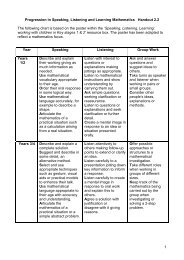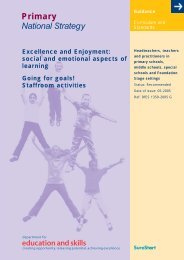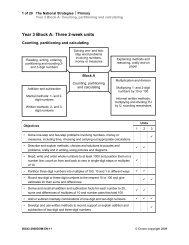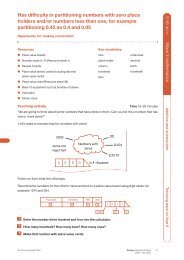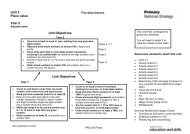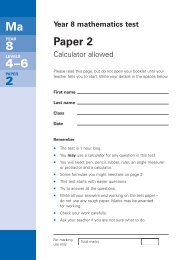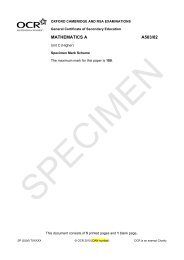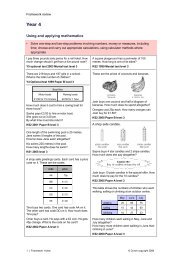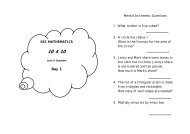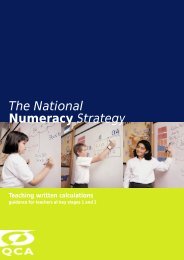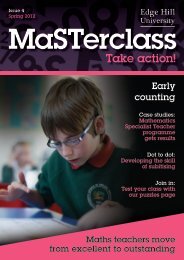3YR 5P
3YR 5P
3YR 5P
- No tags were found...
You also want an ePaper? Increase the reach of your titles
YUMPU automatically turns print PDFs into web optimized ePapers that Google loves.
3 YR /Spotlight 1Does not relate the combining of groups of objects to addition and/or does not interpret the countingof all of the objects as an answer to the question ‘How many are there altogether?’Opportunity for: communicating mathematical ideasHow many now?Time 10–15 minutesResources● Beads● Two pieces of card or paper● Number cards (Resource sheets 1 and 2)Teaching activityKey vocabularyhow many altogether?altogethercountmoretwo groupsplusaddadding togethermakes‘Today we are going to do some adding with these beads.’?Count seven beads. Are you sure you are right?Use this opportunity to check the child’s counting skills.Now split the beads into two groups, or let the child do that, for example three and four beads, thencover each group with a piece of paper.?How many beads are there altogether?If the child cannot work out there are still seven, let them look under one piece of paper at a time, firstthe three, then the four.?How can you work out how many altogether?Watch carefully what the child does. Clarify that to answer the question ‘How many altogether?’ theyhave to add both of the groups.If the child still finds this difficult, show the two groups and let the child talk about what they cansee, using the key vocabulary words. Then combine the two groups.Record some of the sentences the child can make on the concept map.You have to count how many altogether.What I knowabout adding.3 and 4 makes 7.You add two groups together.If you have time, do some clapping again.2 I Primary National Strategy © Crown copyright 2005DfES 1120-2005



